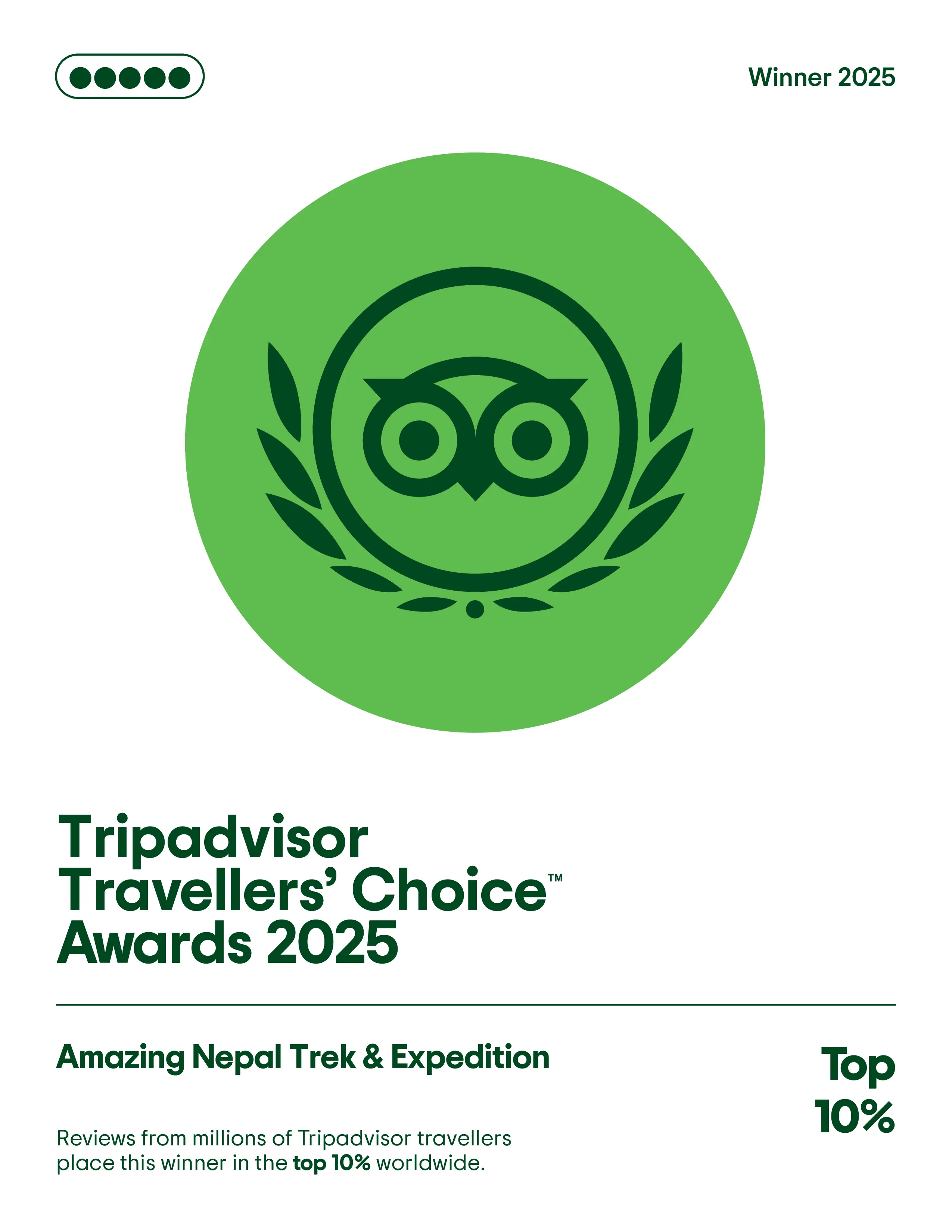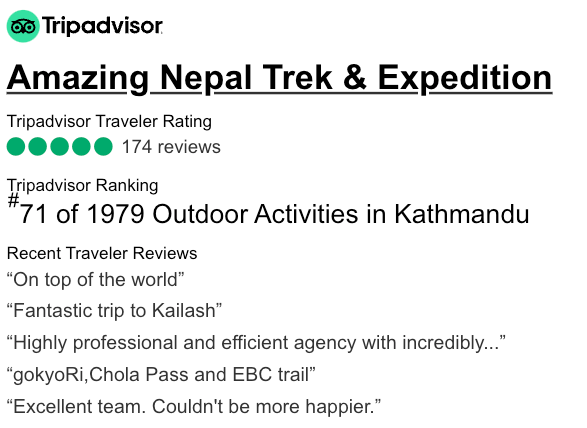
The pristine beauty of nature can be enjoyed in various ways and one of them is trekking. It is one of the best outdoor activities that people enjoy in Nepal. Blessed with the majestic Himalayas, Nepal has many ideal trekking routes that can be enjoyed throughout the year. With a wide diversity in terrain and culture, there are various trekking routes with distinct features and highlights. From treks to the base camps to trail specifically designed to explore ethnicity, you have endless options to choose.
Most of the famous trekking routes in Nepal are those of base camps or circuits around the Himalayan region. Annapurna Circuit Trek and Annapurna Base Camp Trek are some of the routes that are frequented by thousands of travelers every year.

Key Features of Annapurna Region Trek
Elevation and Scenic Diversity
Trekking in the Annapurna region is a package of exploring different landscapes within a short period. From the rice terraces cut into the sides of the Himalayan foothills to lush rhododendron forests to barren-rocky mountains and snowy peaks dominating the horizon, the sceneries and weather change as you trek along.
You Get to Carry a Light Backpack
This is one of the main perks of trekking in the Annapurna region; you travel through 5-8 villages per day, so you won’t have to carry camping or food supplies with you. You can easily find guest houses and restaurants in these villages for food and accommodation.
Low Budget Trek
The expected cost of the trek per day is around $50 or cheaper. This is inclusive of your accommodation, food, and other miscellaneous expenses altogether. You won’t also have to hassle about renting camp tools and extra backpack, saving you money for the porters. So, the budget of the trek is very low as compared to other regions.
Annapurna Circuit Trek
Encircling a mountain along its baseline sounds like an almost impossible idea, but in the land of the Himalayas, it indeed is a reality. The Annapurna Circuit Trek (APC) is a trail for admiring world’s greatest Himalayas like Mt. Annapurna (8091m), Dhaulagiri (8167m), Manaslu (8156m), Gangapurna (7455m), Tilicho peak (7134m), and the sacred Machhapuchhre (6993m), also known as fishtail, from the many vantage points reached while encircling the Annapurna Massif. This trail used as trading routes between Nepal and Tibet was only opened as a trekking route during the late 1970s. Visited by more than 50,000 trekkers from all around the world annually, encircling the massif becomes more thrilling with the highest and most challenging “Thorong La” pass (5416m) and the world’s deepest gorge, Kali Gandaki gorge, along with the most astounding scenery on the planet.
Stunning views of the Annapurna and Dhaulagiri ranges accompany you throughout the trek that takes you past numerous landmarks, en route, and across world’s highest mountain pass—Thorong La (5416m). The trek is a beautiful combination of scenery and culture which dramatically change from subtropical forests, paddy fields and the world’s deepest river gorge to icy moraines, a high mountain pass, arid cliffs, and snowy mountains.
Traditional tea houses on the way allow exploring the diverse ethnic culture of the region inclusive of various communities like Gurung, Thakali and Tibetan. Pay homage at the sacred temple of Muktinath, a revered Hindu-Buddhist pilgrimage site; explore the popular villages of Kagbeni, Jomsom, and Marpha; and visit the traditional villages of Pisang, Humde, and Manang. Each of these landmarks has stories to tell and sometimes distinct food to offer. Annapurna Circuit trek is undeniably the perfect package to explore the Himalayas.
Annapurna Circuit Trek highlights
- Traverse along the foot of the Annapurna range with an up-close view of the Himalayas
- Explore traditional villages and sacred pilgrimage sites
Itinerary:
Day 01: Drive to Beshishahar (830m/2,723ft), 6-7hrs
Day 02: Trek to Bahundanda (1,310m/4,298ft), 5-6hrs
Day 03: Trek to Chamje (1,410m/4,626ft), 5-6hrs
Day 04: Trek to Dharapani (1,960m/6,430ft), 5-6hrs
Day 05: Trek to Chame (2,710m/8,891ft), 6-7hrs
Day 06: Trek to Pisang (3,200m/10,496ft), 5-6hrs
Day 07: Trek to Manang (3,500m/11,482ft), 4-5hrs
Day 08: Acclimatization day at Manang (3,500m/11,482ft)
Day 09: Trek to Yak Kharka (4,110m/13,484ft), 3-4hrs
Day 10: Trek to Throng Phedi (4,400m/14,432ft), 3-4hrs
Day 11: Trek to to Muktinath (3,800/12,467ft) via Throng La (5,416m/17,765ft), 7-8hrs
Day 12: Trek to Marpha (2,670m/8,760ft), 6-7hrs
Day 13: Trek to Ghasa (2,120m/6,955ft), 6-7hrs
Day 14: Trek to Tatopani (1,200m/3937ft), 4-5hrs
Day 15: Trek to Ghorepani (2,850m/9,350ft), 5-6hrs
Day 16: Poonhill hike and trek to Tadapani (2,710m/8,891ft), 5-6hrs
Day 17: Trek to Nayapul and drive to Pokhara (823m/2,700ft), 5-6 hrs walk & 1 hour drive
Annapurna Sanctuary Trek
The Annapurna Sanctuary Trek, also known as Annapurna Base Camp Trek (ABC), is trailed along the foothills of Annapurna South (7219m) to reach the South face of Annapurna I (8091m). Through traditional settlements and pleasant landscapes, this journey takes you to the base camp of the world’s 10th highest mountain, Annapurna (8091m), on the 14th day of the trek. En route, enjoy breathtaking Himalayan vistas and experience morning sun rising over Dhaulagiri and Annapurna ranges from Poon Hill and other vantage points. This trek is designed for trekkers who wish to reach the Himalayan foothills in a more relaxed manner savoring every aspect of the journey.
The trail of Annapurna Base Camp trek is a combination of diverse terrain, culture, and wildlife with the most spectacular view of Annapurna range, Machhapuchhre (6993m), Hiunchuli (6441m), and Dhaulagiri (8167m). Colorful rhododendron forests and high cascading waterfalls make this route appear like a fairyland during the spring season. The route also passes through MBC (Machhapuchhre Base Camp), so it is visiting two base camps in one trip.
A stopover at Ghorepani and Poonhill, during the trek, provides you with the opportunity to witness breathtaking sunrise and sunset views over the Annapurna and Dhaulagiri Himalayan ranges. Picturesque Gurung villages are passed and many hot springs are found on the way that makes this trek a perfectly relaxing journey.
Annapurna Base Camp highlights
- A paradise for landscape photographers
- Exploration of indigenous Gurung culture and lifestyle
Itinerary:
Day 01: Pokhara– Nayapul – Ulleri (1,950m/6,395ft): 1½ hrs drive, 5-6hrs trek
Day 02: Ulleri - Ghorepani (2,850m/9,350ft), 5-6hrs trek
Day 03: Walk up Poon Hill (3,210m/10,528ft) - Ghorepani – Tadapani (2,520m/8268ft), 7-8hrs trek
Day 04: Tadapani - Chhomrong (2,110m/7,249 ft), 5-6hrs trek
Day 05: Chhomrong – Himalaya Hotel (2,920m/9,578ft), 6-7hrs trek
Day 06: Himalaya Hotel – Annapurna Base Camp (4,130m/13,546ft), 6-7hrs trek
Day 07: Annapurna Base Camp – Bamboo (2,300m/7,544ft), 5-6hrs trek
Day 08: Bamboo – Jhinu Danda (1,780m/5,859 ft), 5-6hrs trek
Day 09: Jhinu Danda – Pothana (1,910m /6,266ft) 5-6hrs trek
Day 10: Pothana – Phedi – Pokhara (910m/2,986ft): 3-4hrs trek, 40 min drive
Key Information
- Distance : 80-125 miles/ 130-200 kilometers(Annapurna Circuit); 70 miles/ 115 kilometers (Annapurna Base Camp)
- Number of Days Required: 17 days for the Annapurna Circuit; 10 days for Annapurna Base Camp(Varies on your trekking experiences)
- Tourist permits: TIMS permit and the ACAP permit
- Guides: Required if you haven’t trekked in Nepal before
- Daily budget: $40-$50/ day
Target Group
Comparatively, Annapurna Circuit trek is a little more difficult than Annapurna Base Camp trek. However, both the treks have been frequented by people of all age groups. What mostly matters is both the mental and physical health of the person, and a previous trekking/hiking experience helps as well. One trekking day typically is a 6-7 hours walk, so you need to make sure that you are capable of such physical activity. These treks, therefore, have no age limitation except for infants. People with breathing difficulty or any other health issues are recommended to get clearance from their health personnel.
Trip Preparation and Useful Information for Annapurna Region Treks
Preparation for the around Annapurna treks
To prepare for these treks, it is ideal to at first do some research on the places you want to visit during the trek, depending on which the trekking days can be extended or shortened. However, if you haven't been to Nepal before and don't have much idea about solo traveling, you can book your trip from an authorized travel agency in Nepal. The travel agency will solely be responsible for crafting your itinerary, booking accommodation and transportation, and providing you with trekking guides and porters. The agency will also help you buy or rent gears for your trekking convenience. The booking can be made from the company’s website, and you can then correspond with them regarding your date of arrival and estimated day to start the trek.
Permits required for the Annapurna trips
The mandatory permits for trekking in the Annapurna region are the TIMS (Trekkers Information Management System) card and the Annapurna Conservation Area Permit (ACAP) which can be obtained at the Nepal Tourism Board offices in Kathmandu and Pokhara. Two passport-sized photos, your valid passport, and a photocopy of your passport need to be submitted at the office. The TIMS and ACAP card will cost you $20 and $32, respectively. It is required for you to get those cards before your trek as the charges of ACAP doubles at the entrance of the Annapurna’s.
Banks and ATM’s
Due to geographical challenges, you won’t find ATMs on the Annapurna Circuit, except for a few places. Therefore, it is more convenient to withdraw or exchange enough cash while in Kathmandu or Pokhara than to go short on cash in a remote village in the hills.
Gear List required for Annapurna region treks
● A guidebook or map
● A pair of comfortable hiking shoes
● A sleeping bag
● Outfit to hike in the day
● Warm outfit for the morning and evening time
● Down or fleece jackets
● Rain jacket
● Headlamp
● A buff or a beanie, depending on the time of the year
● Socks and underwear
● Microfiber towel and soap
● Sunglasses and sunscreen
● Wet wipes or toilet paper
● Tampons/menstrual cup/sanitary napkins
● Electronics, power cords, etc.
● Personal toiletries
Conclusion
If trekking is your first love or if trekking is something that has always fascinated you but not having a group limits you, then Nepal can be your safest and most reliable travel destination. Most Nepalese people are very courteous, and because APC and ABC are two of the most frequented trekking routes of the country, you can help find other groups or locals to guide you along the way. Trekking in the Annapurna region is worth every penny spent, for this unique combination of the snowcapped Himalayas and the quaint villages nestled in their laps make for a lifetime memory.








